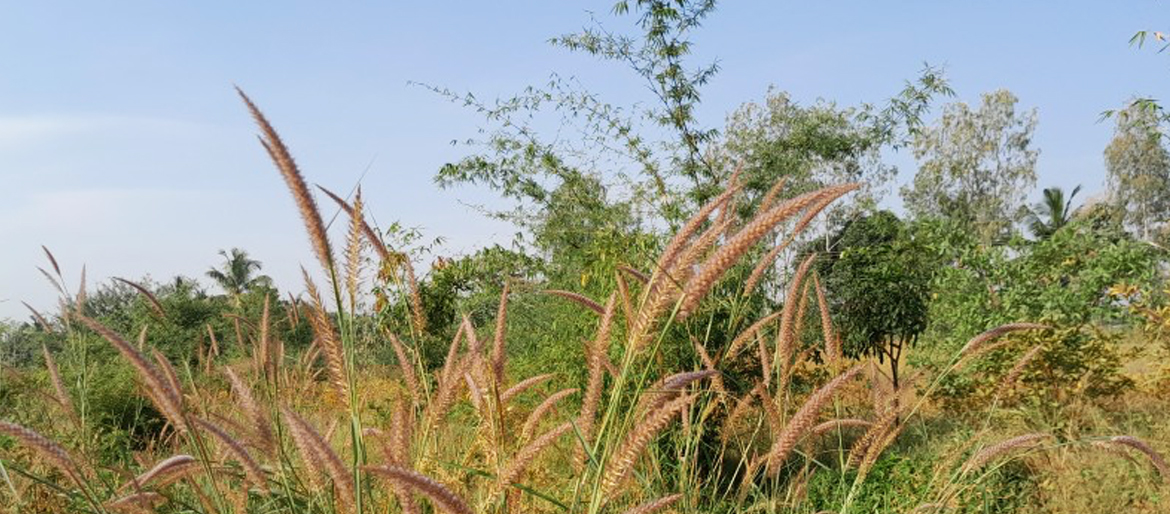Digging Deeper into the Dynamics of Sustainable Soil Management
The world depends on soil for around 95 per cent of its food production. Healthy soils can also help achieve six of the 17 Sustainable Development Goals (SDGs) — Goal 2 (Zero hunger), Goal 3 (Good health and well-being), Goal 6 (Clean water and sanitation), Goal 12 (Responsible production and consumption), Goal 13 (Climate action), and Goal 15 (Life on land).
One of the fundamental components of healthy soil is organic matter, which is anything that has or once had life, whether it is a microbe or even a plant leaf, stem, or root, etc. Much of our land, however, has insufficient levels of organic matter because of degenerative land management practices, including indiscriminate grazing. Take India, for instance. Soils across the country are deficient in organic carbon, macro nutrients and micronutrients, according to a report by the Centre for Science and Environment (a Delhi-based environmental think-tank).
The need of the hour is to boost soil organic matter levels, which reduces soil erosion, improves soil aggregate stability, water infiltration and retention, and shifts more carbon from the atmosphere to the soils, among other benefits. Thus, improving soil health is key to increasing both biodiversity and soil productivity.
Nature knows best
The good news is that the earth can regenerate itself without human intervention, as we all saw during the pandemic-related lockdown. However, humans can form a critical piece of the ecological puzzle and implement soil regenerative practices that are aligned with natural systems. We have seen indigenous cultures closely work with the forces of nature for thousands of years. We can now combine this traditional wisdom with science to implement regenerative, sustainable, and scalable soil management practices.
Rewilding is one such holistic approach that is gaining ground. It means to recreate natural processes as closely as possible and then let nature take the lead in repairing damaged ecosystems and restoring degraded landscapes.
After extensive research and learning from some of the best practices followed by practitioners, we created our own model of rewilding. This model was piloted last year on a 10-acre plot. The learnings and challenges were then incorporated before replicating to rewild 112.5 acres in Maharashtra’s Nashik district. Given below are some of the experiential learnings from our model.
Five components in rewilding :
- Laying the foundation :
Identify denuded landscapes and conduct research on the ecology, climate, microhabitat, community, and design systems incorporating these aspects. Baseline soil quality, microbial content, biodiversity, groundwater levels and biomass; removing invasive plants and creating water sources on the landscapes. - Reducing disturbances :
Minimise grazing and other anthropogenic activity through social fencing. Adopt a no- till, no chemical approach and leave the land undisturbed for one monsoon. This process becomes the starting point for biodiversity regeneration. The grasses that grow attract insects and fauna. Once withered, the grass forms organic, nutrient-dense mulch that feeds the soil biota and conserves moisture. - Protecting the soil :
Soil and moisture improvement measures help prevent run-off and erosion. These include building percolation pits, continuous contour trenches, loose boulder, and Gabion structures. Planting vetiver grass, which is renowned for its ability to rejuvenate degraded soil, is yet another cost-effective option. - Improving biodiversity :
Introduce diverse native indigenous plant species (forest and fruit trees, shrubs, medicinal herbs, grasses, and tubers) suited to the microhabitat. Species diversity leads to greater biodiversity, better stability, natural pest and weed suppression, and livelihood opportunities for local communities. If required, the saplings can be nurtured through organic farming techniques such as green manure or by using humus as a cost- effective replacement for vermicompost. These techniques also boost soil fertility. As the plants thrive and forests begin to regenerate, so does the wildlife move in, further enhancing biodiversity. - Designing for perpetuity
Rewilding can help create resilient local economies and positively impact future generations. However, this requires stewardship by the local communities for sustainability. What can help is to engage with the local communities at a deeper level, provide income security, create awareness, and train local youngsters to become future conservation leaders.
References :
www.fao.org/global-soil- partnership/resources/highlights/detail/en/c/1601298
www.cseindia.org/state-of-biofertilizers-and-organic-fertilizers-in-india-11235

